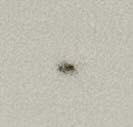Fruit Fly
Scientific Name: Drosophila melanogaster
Order & Family: Diptera: Drosophilidae
Size: 2-4 mm (0.08-0.16 inches)

Natural Habitat
Often found in kitchens, restaurants, and other areas where ripe or fermenting fruits and vegetables are present. They are attracted to moist, decaying organic matter.
Diet & Feeding
Feeds on a variety of fermenting fruits and vegetables, as well as sugary liquids and other organic decay. Larvae feed on the yeasts associated with decaying matter.
Behavior Patterns
Fruit flies have a rapid life cycle, completing development from egg to adult in about 8-15 days. They are known for their strong attraction to volatile organic compounds emitted by ripening and fermenting produce. They lay eggs on or near decaying organic material.
Risks & Benefits
Risks: Can be a nuisance pest in homes and commercial settings. While not known to transmit diseases to humans, they can contaminate food with bacteria and microorganisms from their breeding sites. Benefits: Widely used in scientific research, particularly in genetics and developmental biology, due to their short generation time and ease of rearing.
Identified on: 11/9/2025